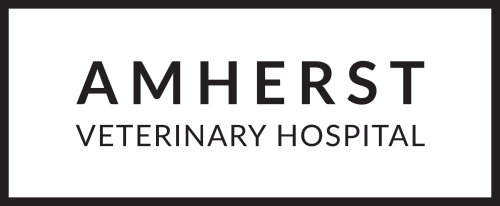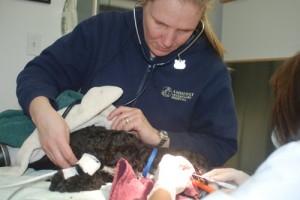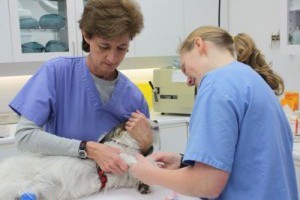Anesthesia and Patient Monitoring
When choosing a hospital for your pet to have surgery, one of the main considerations you should have is their approach to anesthetic and patient monitoring. At Amherst Veterinary Hospital we use the highest quality anesthetic and monitoring equipment alongside the most qualified technicians to ensure the safest anesthesia for your pet.
In our hospital often pre-anesthetic blood, physical exam, and urinalysis are recommended by the doctor to evaluate your pet’s health status before a general anesthetic is performed. Once the doctor approves your pet for surgery an anesthetic protocol is chosen specific to your animal’s health, age, and temperament.
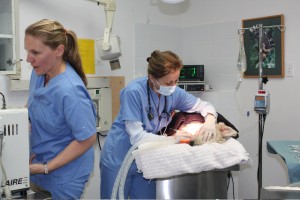
General Anesthesia
A general anesthetic results in a loss of consciousness in the animal and a loss of sensation throughout the body. Most general anesthetic procedures involve several steps beginning with the administration of a sedative. An intravenous injection of an anesthetic renders the animal unconscious while a breathing tube is placed into the animal’s trachea. A gas anesthetic is delivered in combination with oxygen to the animal via the breathing tube to maintain the state of unconsciousness.
There are many ways to reduce the risk associated with anesthesia including a thorough physical examination and blood work prior to anesthesia. Anesthetic monitoring equipment and protocol can also contribute to a safer anesthesia. Our patients are monitored closely by Registered Veterinary Technicians who record parameters such as heart rate, respiratory rate, mucus membrane colour, and blood pressure.
Monitoring closely allows us to intervene earlier and reduce the risk of anesthetic complications. We strive to encompass strategies to increase safety and minimize adverse effects.
Local Anesthesia
A local anesthetic causes a loss of sensation to a ‘local’ area. Small surgical or diagnostic procedures may require a local anesthetic in conjunction with light sedation. A biopsy is a common diagnostic procedure where local anesthetic can be used to control pain. A biopsy involves surgical removal of a small portion of tissue.
Patient Monitoring
During general anesthesia, our patients are monitored closely by a registered animal health technician continuously throughout the anesthetic. They are trained to monitor for heart rate, respiratory rate, temperature, capillary refill time CO2 and oxygen saturation, and blood pressure. A change in blood pressure is an early indicator that a pet may be having difficulties. Monitoring blood pressure allows us to intervene earlier and prevent any anesthetic risk to your pet. We chart your pet’s statistics every 5 minutes from the moment he or she is anesthetized to the time when he or she wakes up and this chart remains a part of your pet’s medical history.
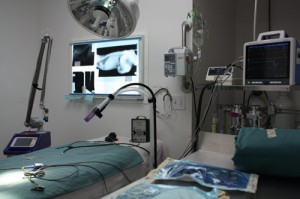
Tranquilization/Sedation
Tranquilization or sedation is used to calm an animal under various conditions. The animal remains awake or may ‘sleep’ but is easily aroused when stimulated. Pet owners frequently request sedation for their animals during travel, thunderstorms, fireworks, etc. Sedation and tranquilization are not without risk and each animal should be assessed prior to dispensing these medicines.
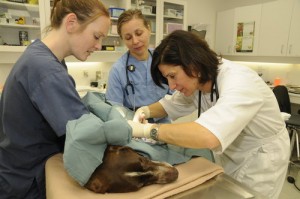
Our Services
- Anesthesia and Patient Monitoring
- Boarding
- Diagnostic Imaging
- Dentistry
- Emergency and/or Extended Care
- Euthanasia and Cremation
- Health Screening Tests
- Laboratory Testing
- Laser Therapy
- Medical Services
- Parasite Control
- Pharmacy
- Surgical Services
- Vaccination Programs
- Veterinary Specialist Referrals
- Other Services
